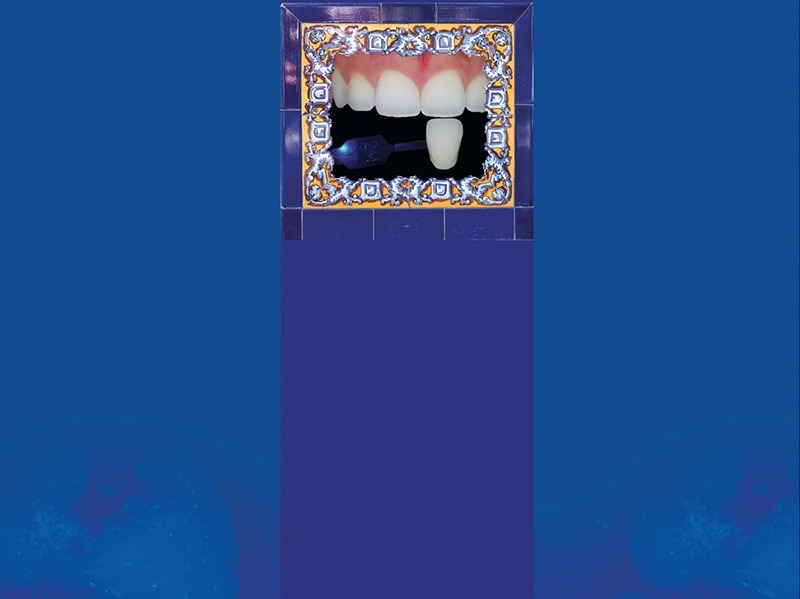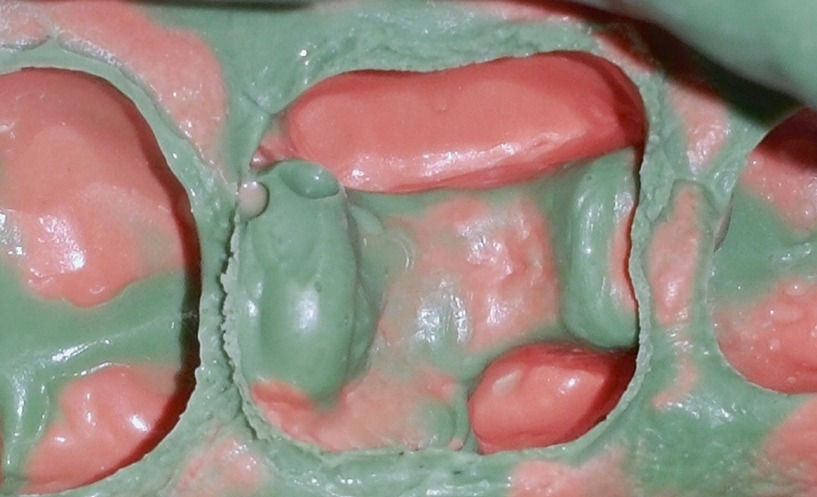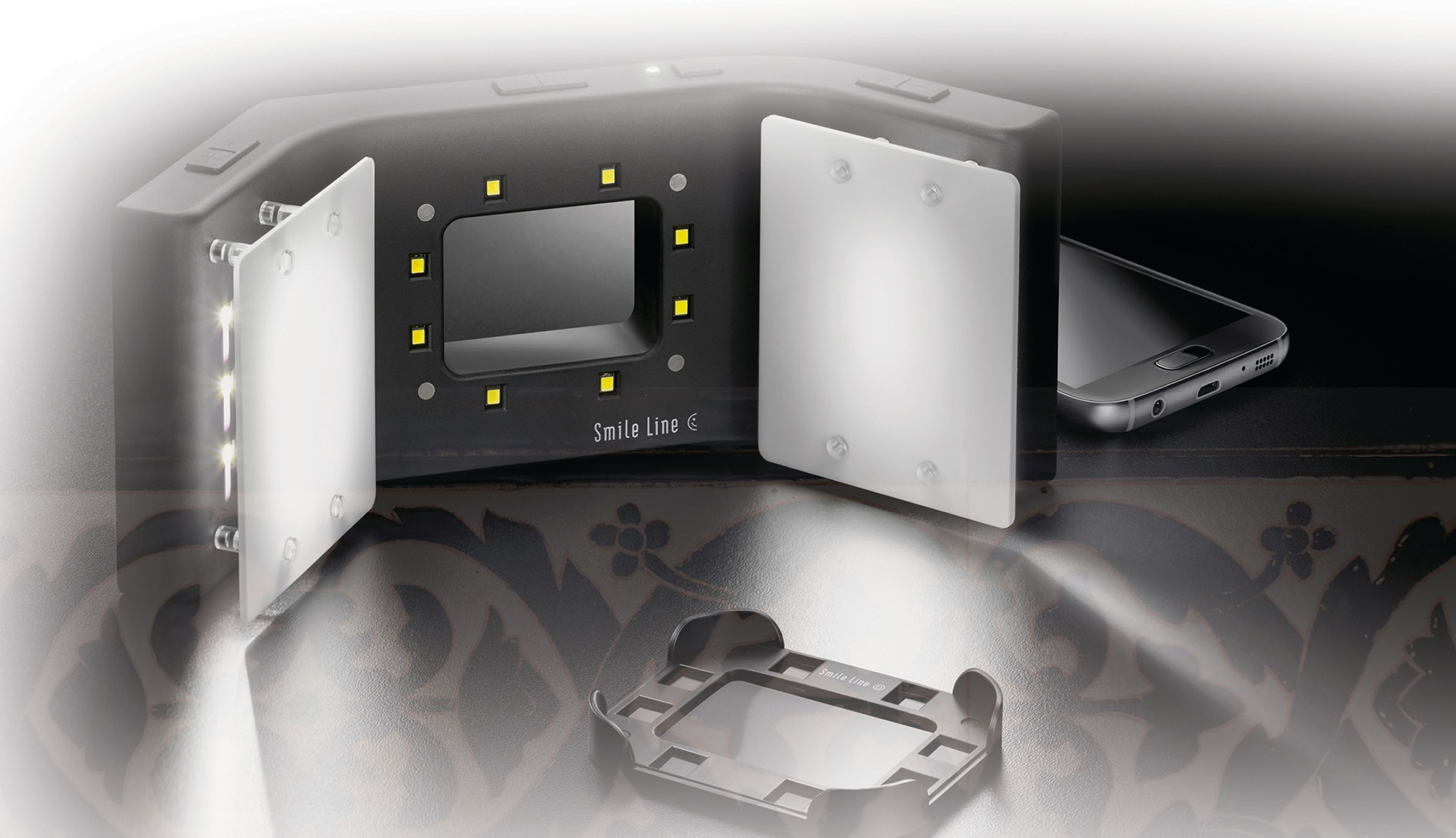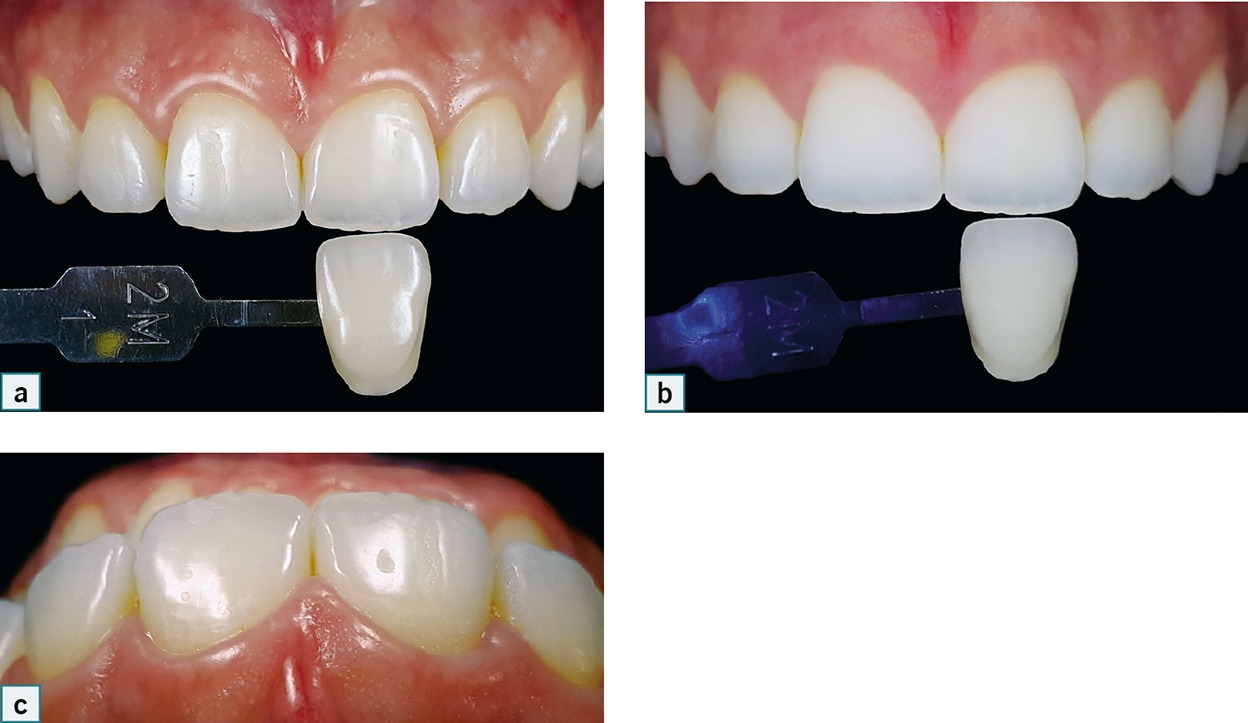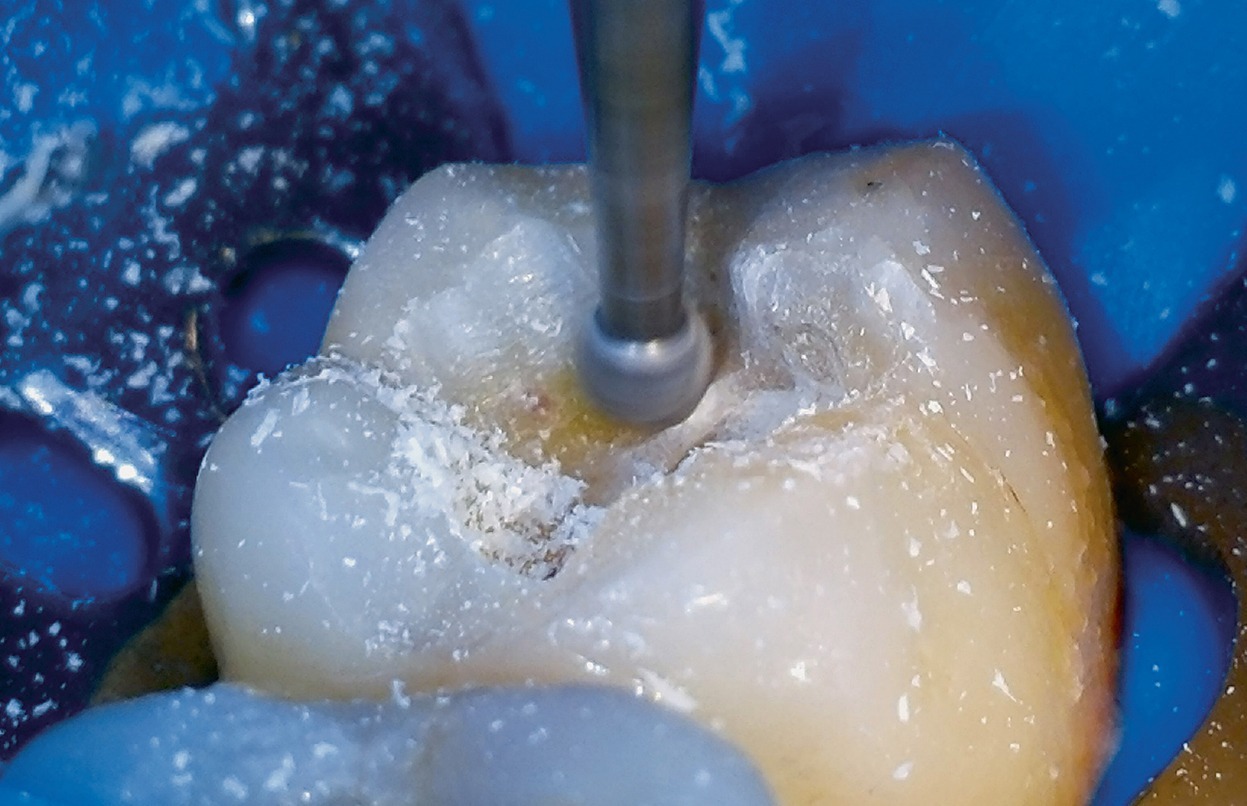CHAPTER 5

PHOTOGRAPHY COMMUNICATION
LOUIS HARDAN

Communication with the patient is always a winning and well-appreciated strategy. A happy patient will promote the dentist’s work in a very efficient way …
Photography Communication
With the constant evolution of digital technology, new and innovative instruments continue to emerge, allowing improved communication efficiently and easily. In dental practice, one of the most important prerequisites to a case’s success is good communication with the lab technician, the patient, and even with colleagues of different specialties.
PHOTOGRAPHY: DIAGNOSTIC AND TRAINING IMPORTANCE
When a patient comes to the dental clinic, the dentist should study the case, diagnose, and start the treatment accordingly. Sometimes, the diagnosis is not evident from the start, and a specialist’s opinion is required. In the past, the patient was referred from one doctor to another, which took a significant amount of time. Today, with the technological evolution, a simple photograph can be sent to a designated specialist who can request the appropriate tests and sometimes, the diagnosis is directly determined.1
The photographs in Fig 5-1 show an odd-looking lesion of the tongue. The diagnosis can be critical and should be approached delicately. On the one hand, the diffused light used for the first photograph eliminates hard light reflection and shows the anatomic appearance of the structure. On the other hand, the polarized light used for the second photograph eliminates the glare, which allows more detail to be shown since the expansion of the lesion becomes clearer.2
Fig 5-1
Photographs of a peculiar tongue lesion. On the left, the picture is taken under diffused light, while on the right, the picture is taken under polarized light.
Sharing photographs between colleagues can prove their importance when transferring a patient from one practitioner to the other, especially when either the dentist or the patient is traveling or moving to another area.
Photographs are tremendously appreciated in the academic field because they represent an otherwise theoretical concept. They can be used to enrich scientific articles and to clarify clinical cases in lectures or workshops.3 A photograph can show a case on a much bigger scale where even the slightest details can be discussed and analyzed; it allows us to explain the drawbacks of any work and how to fix them (Figs 5-2 and 5-3).
Fig 5-2
A student’s preparation with sketching shows how to improve the tooth.
Fig 5-3
A photograph showing the defects of a student’s impression.
PHOTOGRAPHY: DENTIST’S COMMUNICATION WITH THE DENTAL TECHNICIAN
Another important communication in the dental field is the dentist’s communication with the dental technician. It is a crucial step in the treatment plan, especially in the domain of esthetic dentistry. High-quality photographs and videos can be analyzed to determine the esthetic association between the face, teeth, and lips. Full information can be transferred via videos since they capture the dynamics of lip movement and facial muscles contractions and their effect on teeth perception.4
No matter how much the dentist explains and describes the case and the outcome they seek, it will not be as efficient as a photograph. The SmileLite MDP (Mobile Dental Photography) device forms an easy and practical approach to photography, enabling dentists to take high-quality photographs and videos using their mobile phones (Fig 5-4). Information can then be directly sent to the lab technician using a social media application. With today’s technologies and the introduction of the digital smile design concept, these tools are now, more than ever, essential instruments in the dental practice. They allow the dentist and their lab technician to design the smile and visualize treatment outcomes before initiation. Several digital smile design software suites already exist, like Digital Smile Design (DSD) and Rebel Dental.5 A standardized set of photographs is required for each case, and after analyzing these photographs, a new smile is digitally designed. Then, a mock-up can help the patient see what they would expect at the end of the treatment (Fig 5-5).6
Fig 5-4
The SmileLite MDP (Mobile Dental Photography) device forms an easy and practical approach to photography, enabling dentists to take high-quality photographs and videos using their mobile phones.
Fig 5-5
Five photographs are required to make a smile design project (REBEL); these photographs can be easily done using a smartphone and uploaded to the software with other data. These photographs are: smiling, lips at rest, retracted open, retracted closed, and 12 o’clock position.
Photographs can help the technician visualize the dental environment in which their work will integrate. A large amount of information is transferred through photographs, such as color, shape, alignment, personalization, translucency, opalescence and the halo effect of adjacent teeth.7
The SmileLite MDP device emits a light similar to daylight, ensuring ideal conditions for taking a picture. It is also an interesting tool for enabling reliable, simple, and efficient shade matching (Fig 5-6).
Fig 5-6
The SmileLite MDP (Mobile Dental Photography) device with mounted diffusers and an unmounted polarizing filter.
CORRECT TOOTH SHADE SELECTION
To grasp shade matching, one must first comprehend the concept of color. Color is a subjective notion created in the brain by psychosensory and neurophysiological phenomena following the action of light on retinal receptors. Therefore, color perception is the complex result of physiological, psychological, and emotional phenomena. It is a very personal experience, depending on the training of the observer’s eye and can be affected by an existing physiopathology. Thus, shade matching can be a subjective procedure and can vary depending on the individual.8
Thus, color perception varies according to the practitioner. Still, it can also vary individually for the same practitioner depending on psychological disposition, age, eye fatigue, saturation of retinal photoreceptors, or chromatic adaptation.
In addition to the parameters related to the practitioner, other factors can influence the perception of colors like lighting conditions, colors in the surroundings, patient position, and angle of vision.
To get reliable shade matching results, shade should be treated as an objective science.9 By using photography, it can be estimated following objective criteria. An MDP device produces a standardized set of conditions suitable for the dental practice; it ensures a light analogous to daylight, the best light for color perception. Photographs can be analyzed to determine the shape and structure of a tooth, and according to black and white exposure, color values can be detected.
Using the different accessories of the SmileLite MDP device, three photographs can be enough to communicate with the lab technician and give them all the necessary information for the conception of an esthetic and well-integrated restoration (Fig 5-7).
Fig 5-7
Using the different accessories of the SmileLite MDP device, three photographs can be enough to communicate with the lab technician. (a) With diffused light, one photograph should depict an edge-to-edge shade guide with a normal tooth to show the difference between the shade guide and the natural teeth. (b) With polarized light, the same photograph should be repeated (edge to edge) to show the extension of the translucency and its location in the incisal edge, some details like white spots and the difference in color with the artificial shade guide. (c) With the light coming from an opposite side of the camera, a photograph should be taken to show the secondary and tertiary anatomy, because esthetic is not only hue chroma and value but also anatomy.
Shade matching can also be achieved for resin composite restorations using the button technique. It consists of placing buttons of resin composites of different shades on a tooth and then taking a polarized photograph. When studying the photograph, the shade of the button that does not appear on the incisal edge is the enamel shade, and the shade of the button that does not appear in the cervical region is the dentin shade (Fig 5-8).
Fig 5-8
A photograph under polarized light for shade matching, using the button technique.
PHOTOGRAPHY: COMMUNICATION WITH THE PATIENT
It is important to note that communication with the patient is also essential, but it requires a unique approach since the patient is likely unfamiliar with medical terms. When talking to a patient, the dentist must find a common communication ground. A photograph is the simplest way to ensure easy and clear communication.10 Images leave an impression on the patient and motivate them to start the treatment.
Patients are getting more involved in decision-making regarding their treatment plan. Dentists can display the current state of the mouth using photographs to explain what needs to be done. When a patient sees, for example, a fractured tooth or caries or any other problem, they understand the issue and appreciate the needed treatment (Fig 5-9).11
Fig 5-9
Showing the patient a picture of caries removal will make them more confident about the proposed treatment and better understand the procedure that the dentist is performing.
The treatment procedure remains a mystery for patients. Now that they know what is wrong and what needs to be done, they remain curious about the potential result and how to attain it. In this field, photographs of previous cases can give tremendous help. Patients can see “before and after” photographs and, as a result, they can visualize the outcome and even the steps of the procedure (Fig 5-10).12 For example, if a patient is anxious about the preparation of a veneer or an inlay, they can see how much tooth structure is removed and how the tooth is restored. Even photographs of simple procedures, like a composite resin restoration, can help calm and reassure patients that do not know what to expect.
Fig 5-10
“Before and after” photographs of a direct restoration.
 REMEMBER
REMEMBER
When talking to a patient, the dentist must find a common communication ground. A photograph is the simplest way to ensure easy and clear communication. Images leave an impression on the patient and give them the motivation to start the treatment
Stay updated, free dental videos. Join our Telegram channel

VIDEdental - Online dental courses


